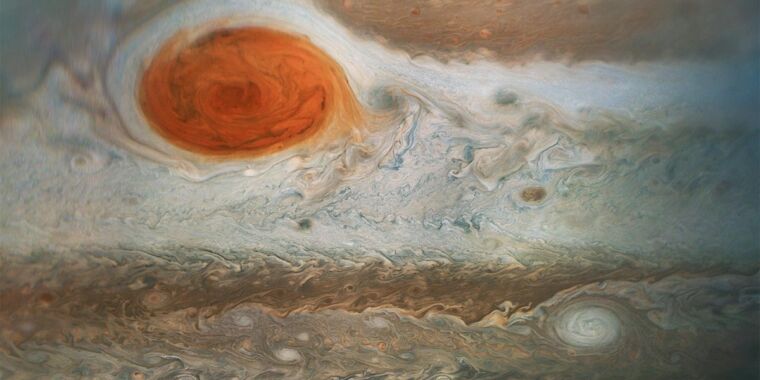- cross-posted to:
- space@lemmy.ml
- cross-posted to:
- space@lemmy.ml
The planet Jupiter is particularly known for its so-called Great Red Spot, a swirling vortex in the gas giant’s atmosphere that has been around since at least 1831. But how it formed and how old it is remain matters of debate. Astronomers in the 1600s, including Giovanni Cassini, also reported a similar spot in their observations of Jupiter that they dubbed the “Permanent Spot.” This prompted scientists to question whether the spot Cassini observed is the same one we see today. We now have an answer to that question: The spots are not the same, according to a new paper published in the journal Geophysical Research Letters.



This is the best summary I could come up with:
The planet Jupiter is particularly known for its so-called Great Red Spot, a swirling vortex in the gas giant’s atmosphere that has been around since at least 1831.
In 1610, aided by the emergence of telescopes, Galileo Galilei famously observed Jupiter’s four largest moons, thereby bolstering the Copernican heliocentric model of the solar system.
A pharmacist named Heinrich Schwabe made the earliest known drawing of the Red Spot in 1831, and by 1878 it was once again quite prominent in observations of Jupiter, fading again in 1883 and at the onset of the 20th century.
Sánchez-Lavega and his co-authors set out to answer this question, combing through historical sources—including Cassini’s notes and drawings from the 17th century—and more recent astronomical observations and quantifying the results.
The team also performed multiple numerical computer simulations testing different models for vortex behavior in Jupiter’s atmosphere that are the likely cause of the Great Red Spot.
The numerical simulations ruled out the merging vortices model for the spot’s formation; it is much more likely that it’s due to wind currents producing an elongated atmospheric shell.
The original article contains 770 words, the summary contains 181 words. Saved 76%. I’m a bot and I’m open source!